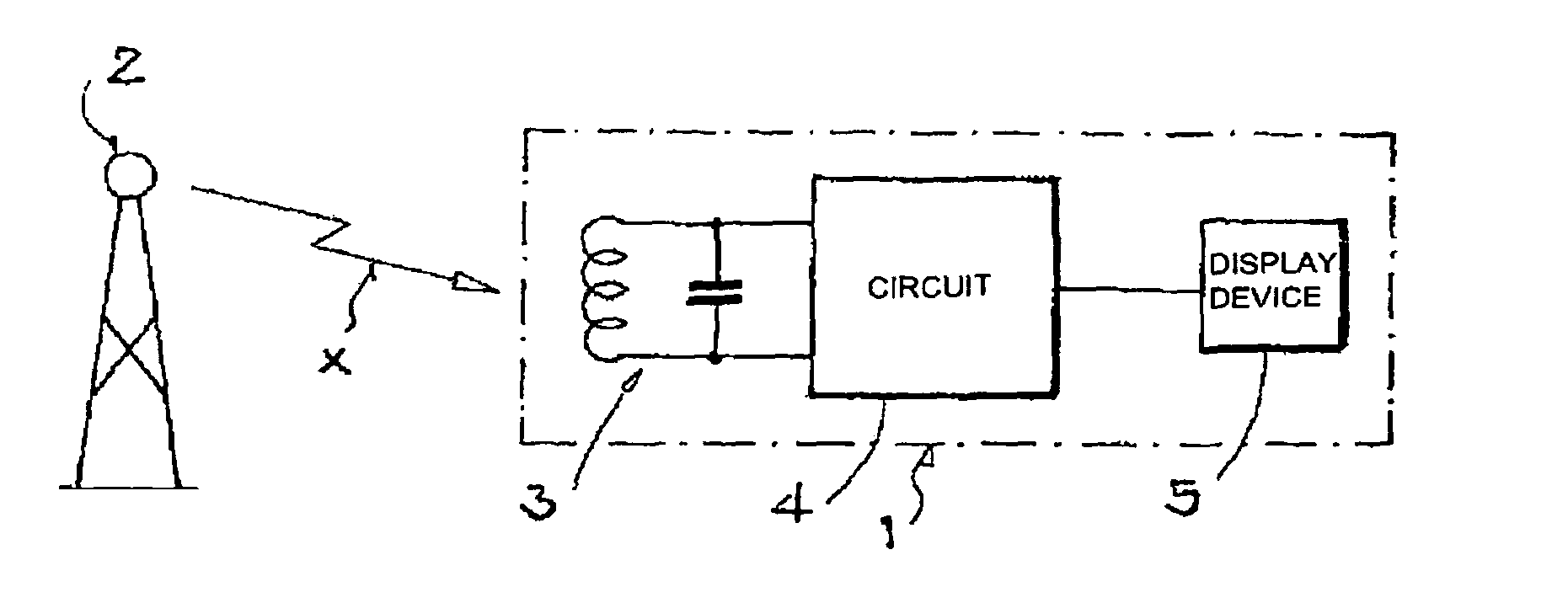Radio clock and method for extracting time information
a radio clock and time information technology, applied in the field of radio clocks and methods for extracting time information, can solve the problems of incorrect evaluation of at least one data bit of the minute record, erroneous reception of time information, etc., and achieve the effect of improving system sensitivity and simple adaptation
- Summary
- Abstract
- Description
- Claims
- Application Information
AI Technical Summary
Benefits of technology
Problems solved by technology
Method used
Image
Examples
Embodiment Construction
[0032]FIG. 3 shows a greatly simplified schematic block diagram of a radio clock 1. The radio clock 1 receives time signals X (see FIGS. 1, 2) from a time signal transmitter 2. To this end, the radio clock 1 has a receiving antenna 3, which is followed by a circuit arrangement 4 which is explained in detail below with reference to FIG. 4. The radio clock 1 also has, connected after the circuit arrangement 4, at least one display device 5, by which the time information obtained from the time signal X is displayed for a user of the radio clock 1.
[0033]FIG. 4 shows a more detailed schematic block diagram of the inventive circuit arrangement 4 from FIG. 3, which is designed to receive and process the time signal X (FIG. 3) of the German transmitter DCF-77. The circuit arrangement 4 has, firstly, an input 6 for the received time signal X, which is present here with a typical signal strength of approximately 0.5 μV. The input 6 is connected to a regulating amplifier 7 in order to amplify ...
PUM
 Login to View More
Login to View More Abstract
Description
Claims
Application Information
 Login to View More
Login to View More - R&D
- Intellectual Property
- Life Sciences
- Materials
- Tech Scout
- Unparalleled Data Quality
- Higher Quality Content
- 60% Fewer Hallucinations
Browse by: Latest US Patents, China's latest patents, Technical Efficacy Thesaurus, Application Domain, Technology Topic, Popular Technical Reports.
© 2025 PatSnap. All rights reserved.Legal|Privacy policy|Modern Slavery Act Transparency Statement|Sitemap|About US| Contact US: help@patsnap.com



